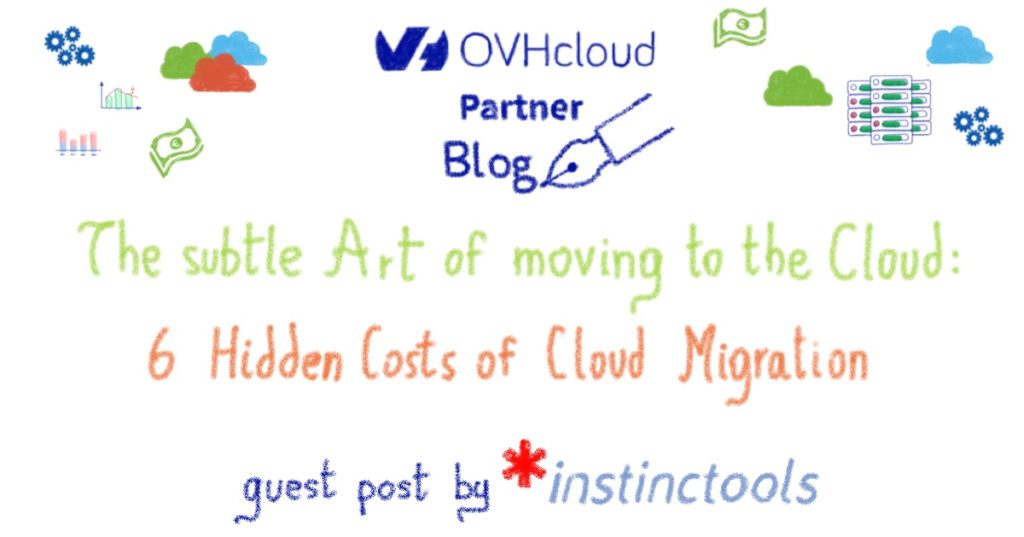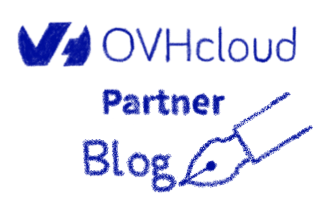Guest blog by Kathrin Ziebell, Team Lead Account Executive at *instinctools

Migration to the cloud is like moving to a new house: backbreaking, time-consuming, but pretty satisfying in the end. You pack your life into boxes, deliver them to the new place, and, eventually, after everything is arranged, breathe out a sigh of relief.
The same goes with cloud computing – you can’t just get there. There’s a lot to think about and get ready for.
Preparing the migration
Migration projects start with figuring out what’s in place if those items are needed and how they will work on the new platform. This preparation stage is always about deciding what is useful enough to keep and what doesn’t make sense to store and it’s about cost, moving from a CapEx to an OpEx model.
It’s actually pretty simple: if the expenses of making your legacy app “cloud-ready” are less than maintaining it on-premises then it’s worth it. To determine if the migration is justified from a cost standpoint, you need to take into consideration the costs of converting, implementing, and integrating the cloud-based app with your existing architecture.
Control over expenses has always been one of the main promises of cloud computing. Unfortunately, cloud migration is far from a simple process. Without rigorous planning and an in-depth understanding of how it should be done, companies may run into pitfalls they didn’t initially expect.
According to Capita, 56% of the surveyed IT decision-makers admit the cloud is more costly than they thought. Yet, the majority (86%) of respondents are satisfied with cloud computing. For more than three-quarters (76%) of organizations, moving to the cloud has led to an improvement in IT service levels, while two-thirds (67%) report the cloud has proven more secure than on-premises.
These numbers clearly indicate two things. The first is that the benefits of cloud migration are compelling enough to outweigh its downsides. The other one – enterprises should know exactly what to get ready for.
Cloud migration issues you haven’t been aware of
Vendor lock-in

There are situations where the cost of changing a vendor is so high that the customer is unwillingly stuck with the original vendor. Remember the early days of iTunes when Apple locked consumers into using the service because music bought via iTunes could only be played within the iTunes App?
However, some providers can be confusing, complex, and cumbersome to procure or even understand what is needed to create a suitable cloud model for the organization.
The same ‘lock-in’ can take place when it comes to cloud service providers. There are good reasons to prove why this is bad. It might be the inability of the current provider to meet the new requirements of your growing business.
Therefore, we partnered with OVHcloud since we discovered that the initial planning cost and further along ongoing expenses can be sometimes challenging with other Cloud providers. OVHcloud provides reversibility in terms of ability to migrate to and away from a cloud provider as well as interoperability which means the freedom to move among cloud providers and integrate cloud with legacy systems and applications.
The truth is that most cloud migrations, if planned and executed diligently, go pretty smoothly. However, if something goes wrong, cloud-to-cloud migration has become quite big of an issue. Here are some tips to mitigate vendor lock-in risks:
- do your homework: figure out your cloud migration goals, assess your current IT situation, determine necessary cloud components;
- make an ‘exit’ plan: no matter how weird planning to quit may seem at the beginning of your cloud journey, it’s an important step to protect your company in case your ‘plan A’ goes adrift;
- maximize the portability of your data by avoiding proprietary formatting and make sure that your cloud vendor provides a way to extract data without difficulty;
- consider a multi-cloud strategy to be able to choose the best offering from each cloud provider;
- implement DevOps tools to maximize code portability.
Overprovisioning
The word “provisioning” speaks for itself. As much as stocking up with essentials works for camping, it can also be perfectly applied to cloud computing, except the essentials in this case are not thermoses, sleeping bags, or tents. Provisioning is equipping cloud instances with everything it needs to run IT services. The problem is there’s always a risk to either overestimating your needs or underestimating them.
Overprovisioning is buying more of something than you need and paying for power you don’t use. Meanwhile, the price of what you really need and what you pay for may differ significantly. There are a couple of things you can do to avoid this expensive mistake. First of all, size up your servers correctly. It’s a good idea to set up a baseline of how much power you use and start from there, monitoring and sizing up the resources as you go. Secondly, terminate idle instances. To lower the cost of your monthly cloud bill, don’t leave underutilized servers switched on. With IaaS, you don’t pay for instances that are turned off.
In close partnering with OVHcloud and *instinctools, we can map out and understand our customers’ current and future workloads. With the support of the OVHcloud team, we can build tailored models to define the exact requirements for a cost-effective approach and ultimately the true value that a move to the cloud can deliver.
A fragmented approach to the migration process
Sometimes companies view migration from the bottom up when each department manages it in a vacuum. Such a strategy impedes the transformational process and causes the duplication of effort, which, at the end of the day, increases the cost of migration. To lessen the struggle with individual departments pulling time and resources in opposite directions, you need to unify your cloud migration strategy.
Straight lift-and-shift approach
Moving to the cloud will only save you money, if you know how your applications need to be changed, that is. As tempting as it may initially seem, the lift-and-shift approach doesn’t work as you expect it to with applications that are not cloud-friendly. It usually brings about degraded performance or operational issues. Moreover, without code optimization, configuration, or refactoring there’s little chance to maximize long-term cloud cost savings. Thus, identifying the critical features of the application is the crucial thing to do before the migration. Otherwise, it’ll be impossible to take full advantage of cloud implementation.
Further along in collaboration with OVHcloud we offer a Multicloud approach that allows your cloud to be hybrid, private, public, or a combination of all. The primary goal of Multicloud is to give you flexibility to operate in the best environment for your specific needs. In answering all business and security needs our approach covers e.g. Bare Metal Cloud, Hosted Private Cloud and Public Cloud.
Support issues

If an online presence is critical for your business to operate smoothly, support issues should be of primary concern. If something goes wrong with your applications in the cloud, you can’t speak directly to the engineer or expect that your problem will be resolved in no time – cloud providers have their workforce limitations and expanding customer-base. Having to wait for the issue to be resolved takes its toll in terms of downtime and inability to serve end-users.
As long as customers can’t control infrastructure from their end, they have to be really careful about choosing a trusted cloud vendor that is capable of providing the level of support and protection you need.
Lack of extra skills
Without a doubt, a team with a strong technical background is a must for carrying out cloud migration. But it’s not only your staff’s tech knowledge that can save you money. Non-technical skills are of equal importance:
- proper project management
Planning and tracking, organizing and overseeing a lot of moving parts are essential when it comes to cloud computing success. So these are the abilities a good project manager should possess.
- business knowledge
Understanding core business processes and being able to explain them to programmers ensures all the necessary business requirements will be met in the course of the cloud project.
- understanding legal implications
Employees who can provide legal advice on cloud computing are invaluable for the company. Having some knowledge of rules and regulations around cloud providers can significantly improve decision-making.
In conclusion
Every migration journey is unique. For some companies that were ‘born digital,’ it’s likely to be short and easy, for others – longer and more complex.
Whichever path you’re meant to take, the destination can be reached with the help of partners who embrace your uniqueness. The ability for businesses to choose their provider, platform, and solutions is paramount. OVHcloud and *instinctools supports an open cloud approach by embracing open-source technologies and supporting industry standards. OVHcloud and *instinctools lead and support companies in their cloud migration journey providing an open platform, IT consulting and cloud computing services.
Drop us a line if you have challenges with your cloud migration project.


Kathrin Ziebell
Team Lead Account Executive at *instinctools
✉️ kathrin.ziebell@instinctools.com - 📞 +49(0) 175 824 0190

